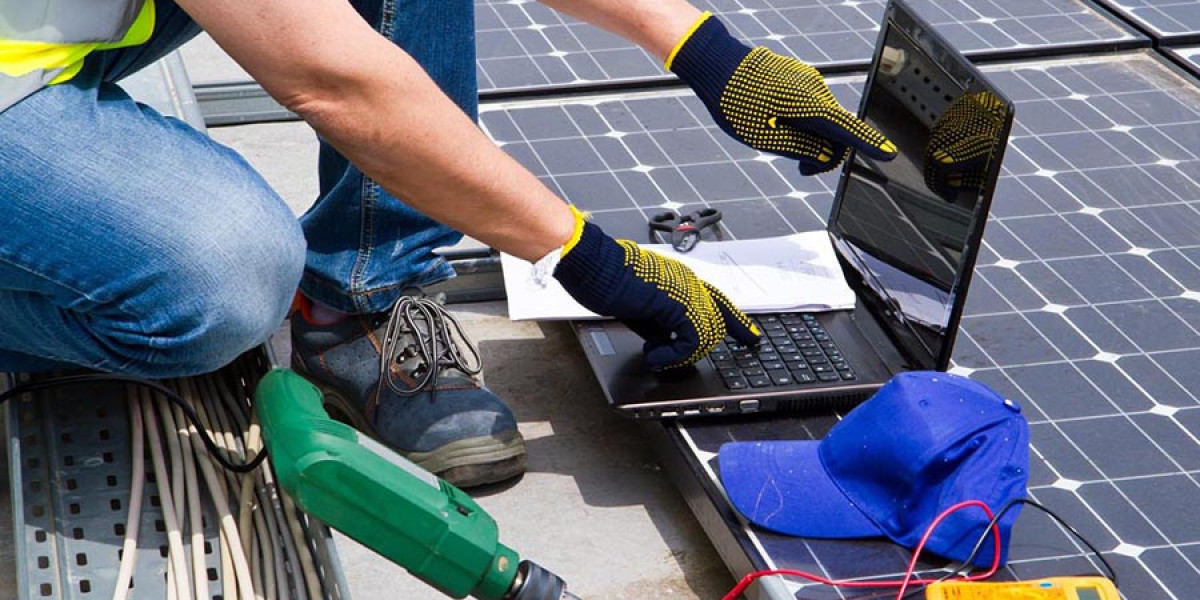With solar energy becoming more affordable and accessible in 2025, many homeowners are exploring smaller systems like a 4 KW Solar Installation to power their homes more efficiently and cut down on rising utility bills. Whether you’re new to solar or planning an upgrade, a 4 kilowatt (kW) system strikes a great balance between affordability and energy output for small to medium-sized households.
In this guide, we’ll cover everything you need to know about 4 KW solar systems — from performance expectations to potential savings, installation tips, and how to make the most of available incentives.
What Is a 4 KW Solar Installation?
A 4 KW solar installation refers to a photovoltaic (PV) system that produces up to 4,000 watts (or 4 kilowatts) of power under ideal conditions. Typically, this system includes around 10 to 12 solar panels, depending on the wattage of each panel. It's an ideal size for homes with moderate energy usage, often averaging 400 to 600 kWh per month.
Homeowners with good sun exposure and limited roof space often choose this system for its compact footprint and reliable performance. A 4 KW solar system is also easier to install and more cost-effective than larger arrays, making it a popular option in both urban and rural areas.
How Much Power Does a 4 KW System Produce?
The actual output of a 4 KW Solar Installation depends on various factors, including location, roof angle, shading, and climate. On average, a 4 KW system can produce between 12 to 18 kWh of electricity per day, or about 4,500 to 6,500 kWh per year.
Here’s a quick look at how location affects annual output:
In sunny states like California or Arizona, output could exceed 6,000 kWh annually.
In northern states like New York or Michigan, the same system might generate closer to 4,500–5,000 kWh per year.
Despite these differences, a 4 KW system is capable of covering a significant portion of a household's energy needs — often 60% to 100%, depending on consumption patterns and energy-efficient practices.
What Are the Cost and Savings of a 4 KW System in 2025?
Thanks to falling equipment prices and government incentives, the cost of solar has dropped dramatically in recent years. In 2025, the average cost of a 4 KW Solar Installation before incentives ranges from $8,000 to $10,000, or around $2.00 to $2.50 per watt. After applying the federal solar tax credit (currently 30%), the net cost could fall to $5,600 to $7,000.
Here’s a breakdown of potential savings:
Electricity Bill Savings: A system generating 6,000 kWh per year could offset $800 to $1,200 in electricity costs annually, depending on your local utility rates.
25-Year Savings: Over the lifespan of the system, homeowners can save between $20,000 to $30,000, not accounting for utility rate increases.
Payback Period: Most 4 KW systems offer a payback period of 6 to 8 years, after which all energy generated is essentially free.
These numbers can improve even further when paired with local or utility-based incentives.
Incentives and Rebates to Reduce Costs
In addition to the 30% federal solar tax credit, many states and utilities offer rebates, performance-based incentives, or net metering policies that can significantly increase the return on investment of your solar system.
For example:
Net metering allows homeowners to receive credits for excess energy sent back to the grid, effectively reducing your electric bill.
Some states offer property tax exemptions, meaning the added value of your solar system doesn’t increase your property taxes.
Certain utilities may provide upfront rebates or installation bonuses for using certified solar equipment or contractors.
Before beginning your 4 KW Solar Installation, it’s worth researching your local solar incentives to get the best deal.
Is a 4 KW Solar Installation Right for You?
Choosing the right system size depends on your household’s energy usage and your available roof space. A 4 KW system is generally suitable for:
Homes with 1 to 3 occupants
Average monthly electricity bills of $75 to $150
Roofs with 200 to 300 square feet of usable space
Sun-exposed areas without major shading
If your energy usage is higher — perhaps due to an electric vehicle or central air conditioning — you may want to consider a larger system. However, a 4 KW system is an excellent starting point and can always be expanded later with additional panels or storage.
Tips for a Successful 4 KW Solar Installation
Choose the Right Installer
The performance and longevity of your system depend heavily on the quality of the installation. Look for certified installers with good customer reviews, and ask about warranties on workmanship and equipment. Many reputable companies offer a 25-year warranty on solar panels and inverters, which aligns with the typical system lifespan.
Optimize Your Roof Layout
Orientation and tilt angle play a major role in maximizing solar output. Ideally, panels should face south (in the Northern Hemisphere) and be tilted at an angle close to your local latitude. If your roof has obstructions or limited space, microinverters or optimizers may help improve performance.
Monitor Your System Regularly
Most modern solar systems include monitoring apps that allow you to track production and usage. Monitoring helps ensure your system is operating as expected and alerts you to any drop in performance. If production dips unexpectedly, it may indicate a maintenance issue or shading problem that needs attention.
Can You Add Battery Storage to a 4 KW System?
Yes, a 4 KW Solar Installation can be paired with battery storage to increase your energy independence. While a 4 KW system may not fully charge a large battery every day, it can still provide enough energy to power essential appliances during outages or help reduce your reliance on the grid during peak hours.
Battery prices have come down in 2025, making solar-plus-storage systems more accessible. This combination is particularly useful in areas with time-of-use electricity pricing or frequent power outages.
Conclusion: Why a 4 KW System Makes Sense in 2025
A 4 KW Solar Installation offers an ideal mix of affordability, efficiency, and long-term savings for many homeowners. It's large enough to cover the bulk of your household electricity needs while keeping installation costs manageable. With continued advancements in solar technology and a strong push toward clean energy, there’s never been a better time to go solar.
By choosing the right installer, taking advantage of available incentives, and monitoring your system’s performance, you can ensure your 4 KW solar system delivers strong returns for years to come.








